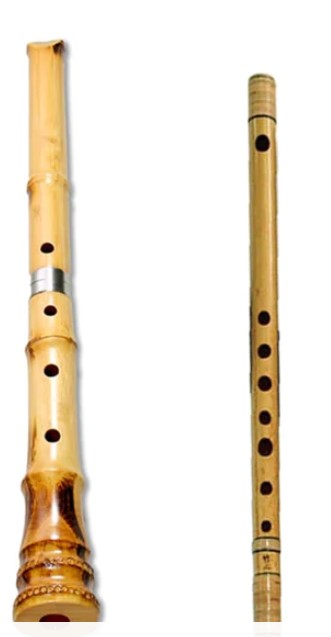1. Origins and Evolution of the Shakuhachi Flute:
The Shakuhachi flute traces its origins to ancient Japan, where it was initially introduced by Zen Buddhist monks as a tool for meditation. Over time, the Shakuhachi evolved from a spiritual instrument to a symbol of contemplation, finding its place not only in traditional Japanese music but also in various global musical landscapes. The evolution of the Shakuhachi reflects its enduring significance and adaptability.
2. Craftsmanship: Breathing Life into Bamboo:
Crafting a Shakuhachi is an intricate art that involves selecting and treating bamboo with precision. Expert artisans meticulously shape the bamboo to create an instrument that embodies both simplicity and sophistication. The craftsmanship behind the Shakuhachi is a labor of love, with each flute being a unique expression of the artisan’s skill, dedication, and respect for the natural material.
3. Playing Techniques: Meditative Expressions:
The playing techniques of the Shakuhachi are a study in meditative expression. Musicians draw upon a range of breathing and fingering techniques to coax ethereal tones from the bamboo, creating a sonic landscape that reflects tranquility and introspection. The Shakuhachi’s playing techniques contribute to its ability to evoke a meditative state, making it a sought-after instrument for spiritual and contemplative practices.
4. Cultural Significance: Harmony of Tradition and Zen Philosophy:
Beyond its musical prowess, the Shakuhachi holds profound cultural significance, especially within the realms of Zen philosophy. Its association with meditation and mindfulness aligns seamlessly with the principles of Zen Buddhism, where simplicity and harmony are valued. The Shakuhachi becomes a vessel for cultural expression, weaving a harmonious tapestry that connects musicians and listeners to the essence of Japanese tradition.
5. Global Reverberations: Shakuhachi Across Borders:
While deeply rooted in Japanese culture, the Shakuhachi’s allure has transcended geographical borders. Its haunting and evocative tones have found resonance in diverse musical genres worldwide. Musicians globally, captivated by its unique sound, have incorporated the Shakuhachi into various compositions, demonstrating its ability to transcend cultural boundaries and become a universal voice of contemplation.
6. Learning the Shakuhachi: A Journey of Inner Harmony:
Learning to play the Shakuhachi is not just a musical pursuit but a journey of inner harmony. Beginners, drawn to the instrument’s tranquil tones, find solace in the initial stages of learning. The simplicity of its design, with five finger holes and a deep connection to breath, makes it an accessible instrument for those seeking a meditative outlet through music.
7. Contemporary Resonance: Revitalizing Tradition:
In contemporary times, the Shakuhachi continues to captivate audiences and musicians alike. Its traditional roots remain intact, but contemporary artists explore innovative ways to revitalize its sound, ensuring that the Shakuhachi remains a living, breathing instrument that speaks to the evolving nature of music.
Conclusion: A Harmonious Melody of Past and Present:
In conclusion, the Shakuhachi flute stands as a testament to the harmonious interplay between past and present. Its origins rooted in ancient Japan echo through the centuries, and yet its tranquil melodies continue to find relevance in our modern, fast-paced world. As we immerse ourselves in the enchanting world of the Shakuhachi, let its meditative tones guide us toward a serene and contemplative space where the beauty of music becomes a timeless source of tranquility.



